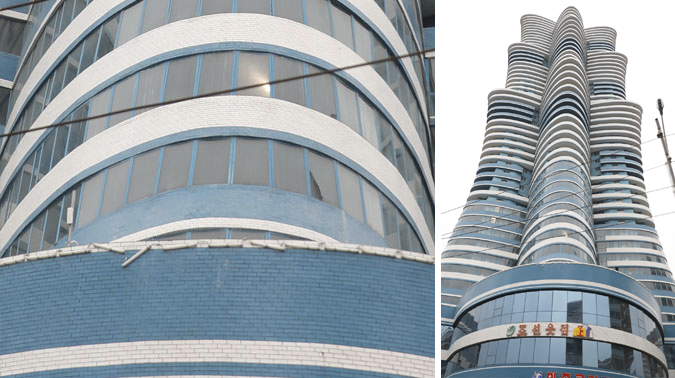The tallest skyscraper on Pyongyang's landmark Mirae Future Scientists street, a prestige project opened in November 2015, appears to be completely uninhabited and in a state of visible decay, photos and observations provided by regular visitors and residents of the city showed this week.
The lack of visible occupancy in the street's tallest 53-floor building is notable given North Korean leader Kim Jong Un's personal involvement in the project and subsequent initiation of the far larger 3,000+ apartment Ryomyong Street complex, opened at a major ceremony attended by foreign journalists just a month ago.
The tallest skyscraper on Pyongyang's landmark Mirae Future Scientists street, a prestige project opened in November 2015, appears to be completely uninhabited and in a state of visible decay, photos and observations provided by regular visitors and residents of the city showed this week.
The lack of visible occupancy in the street's tallest 53-floor building is notable given North Korean leader Kim Jong Un's personal involvement in the project and subsequent initiation of the far larger 3,000+ apartment Ryomyong Street complex, opened at a major ceremony attended by foreign journalists just a month ago.
Become a member for less
than $5.75 per week.
Unlimited access to all of NK News: reporting, investigations, analysis
The NK News Daily Update, an email newsletter to keep you in the loop
Searchable archive of all content, photo galleries, special columns
Contact NK News reporters with tips or requests for reporting
Get unlimited access to all NK News content, including original reporting, investigations, and analyses by our team of DPRK experts.
Subscribe now
All major cards accepted. No commitments – you can cancel any time.










